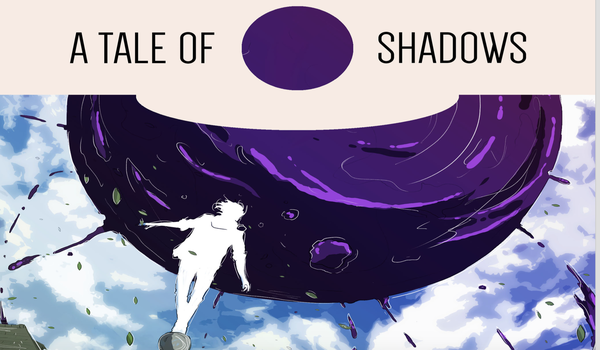Last November, I reviewed the first issue of A Tale of Shadows. The debut featured some fantastic artwork and an intriguing premise that certainly showed some promise for the independently produced series. Set in the fantasy world of Wavefront, which is led by a group of religious zealots, the introduction of technology causes a schism that has destructive effects for all who live there. The first issue did a commendable job of establishing the dichotomy between technology and spirituality as it would seemingly be explored over subsequent issues, as I was particularly excited to see where the story went. While the second issue represents a fantastic improvement upon the already impressive artwork, the story unfortunately retreads upon some familiar beats from the prior issue.
Though the story revolves around the efforts of the religious leader, the Deacon, as he rebels against inventor Dirac’s technological innovations, the protagonist is a young kid named Felix. While it’s unclear of how Felix feels about the spiritual sentiments expressed by the Deacon, he’s very much onboard with Dirac’s hopes for change, and for the most part plays the role of the unexpected hero.
One of the major issues with Book 1 is cleared up right from the get-go. The story is predominately one in which the entire community is at a crossroads, yet the background characters were largely undeveloped and extraneous. In Book 2, however, we’re introduced to a father and daughter duo that gives voice to the characters who were left voiceless in the debut issue. Another improvement upon the first issue which must be noted is in the artwork. The visuals are crisper. The colors are more vibrant. Illustrators Lyndon White and Tyler Wilson have clearly stepped their game up for this issue, and it shows. There is a much better sense of the Wavefront community, which thus places more weight upon the clash between Dirac and the Deacon.
Though the ramifications for Felix’s decision to turn on the Sprectromitizer are greater now that we know some more of the characters who inhabit Wavefront, the timeline of the two issues in relation to each other isn’t explicitly clear. The opening of Book 1 revealed Wavefront to have been decimated after Felix turned on Dirac’s mammoth machine, before flashing back three days to see what led to it. “Cause & Effect,” however, seems to once again pick up within those three days prior to the Sprectromitizer being turned on. While certain points that were glossed over previously are given more backstory – such as Dirac’s hopes for revolutionizing the energy capabilities of Wavefront through the implementation of his machine – Book 2 has the same ending as its predecessor. Readers aren’t necessarily shown the next step in this story, but merely a retelling of what was already revealed in Book 1.
While some questions are answered, other additional inquiries are raised as well. Though the Deacon stands against Dirac and his technological ambitions, he is seen drinking the purple ooze that’s a byproduct of his invention as he proclaims, “We must take our Lord inside ourselves fully. We must become one with divinity.” It’s possible I missed something here, but isn’t this out of character for the Deacon to endorse the ooze as something divine, rather than something abhorrent?
After two issues, it’s still quite unclear as to whether the ooze is something good or bad. We’ve seen it act as a destructive force, yet Dirac is also seen proclaiming it as something fundamentally constructive. Neither of the two warring factions seem to be completely right or wrong in their beliefs, which is a good indicator for the rest of the series. The spiritual beliefs discussed continue to be one of the strongest aspects of the series. A Tale of Shadows is very much interested in exploring religion, spirituality, and humanity’s relationship with God as its affected by the implementation of technology. While some may argue that the two are mutually exclusive, Dirac counters, “The concept of ‘God’ is outmoded. A construct designed to hold us back, to control us. It’s time to step into the light, to accept our place as controllers of our own destiny.”
Once again, the stage is set for significant ideas to come head-to-head in a cataclysmic battle, yet it’s a shame that we couldn’t see it pushed much further than it already had been in Book 1. The artwork here represents a tremendous improvement upon its predecessor, now lets hope the creators take this opportunity to strengthen the storyline in Book 3, as well.
What did you think of the next installment of A Tale of Shadows? Is it a worthy successor to Book 1? Sound off in the comments or let us know on Twitter!




